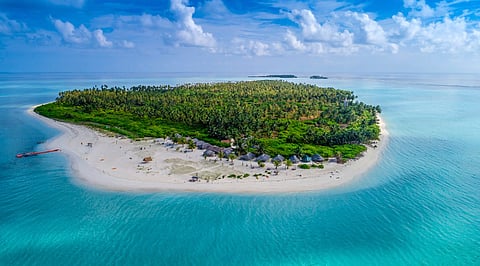

In the heart of the Arabian Sea, a hidden gem awaits avid travellers — the pristine archipelago of Lakshadweep.
Steeped in history, this cluster of islands has a fascinating tale to tell, blending ancient legend with a cultural mosaic that defines contemporary life in this Union Territory. The islands have been inhabited since time immemorial and have always been known to exist, especially by their seafaring neighbours in what is now Kerala, India.
The earliest written references to the chain of islands, however, appear in the11th-centuryy treatise Mushika-vamsha — a Sanskrit dynastic chronicle by poet Atula narrating the legendary history of the Mushika dynasty, which ruled the northern part of the Malabar coast. Lakshadweep or Laccadives’ roots can also be traced back to the era of Cheraman Perumal, whose kingdom is said to have also included the scattered isles.
The Portuguese also attempted to exploit the islands in the 16th century but were thwarted by the then-resilient islanders, marking a triumph against invaders.
Transitioning from Hindu to Muslim rule, Lakshadweep’s fate took a turn in 1783 when islanders sought refuge under Tipu Sultan. Post the Battle of Srirangapatna in 1799, British rule ensued, marked by the Lakshadweep Regulation of 1912, shaping the islands’ governance.
Fast forward to the present, Lakshadweep stands as a unique blend of tradition and modernity. Formed as a Union Territory in 1956 and officially named Lakshadweep in 1973, the islands beckon with a rich cultural tapestry.
